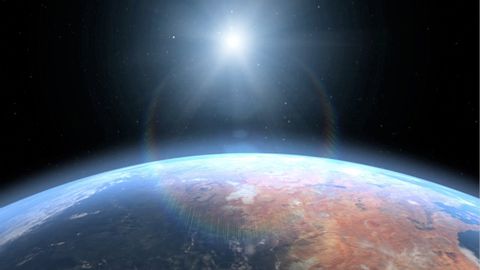火星はなぜ死に、地球は生きたのか (Why Mars Died, and Earth Lived)
黃駿祐 が 2021 年 01 月 14 日 に投稿  この条件に一致する単語はありません
この条件に一致する単語はありません- n.地点 : 場所;困難 : 苦境;位置づけ;少し;斑点 : 染み : 汚点
- v.t.(偶然)見つける
- n.分野;畑;野原;フィールド;戦場;フィールド;場
- v.t.答える;守備につく;出場させる;捕球する
- adj.野外の
US /ˈplænɪt/
・
UK /'plænɪt/
- n. (c./u.)惑星;世界;星
- prop. n.地球
エネルギーを使用
すべての単語を解除
発音・解説・フィルター機能を解除

